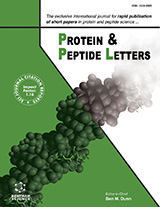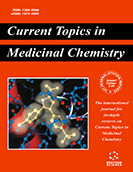Abstract
The Arabidopsis thylakoid membrane bimodular oxidoreductase, AtVKOR, could catalyze disulfide bond formation, and its direct functional domain (thioredoxin-like domain) is located in the thylakoid lumen according to the topological structure. Many proteins have one or several disulfide bonds in the thylakoid lumen, including photosynthetic chain components. A yeast two-hybrid assay was used to identify potential targets for the AtVKOR, and a Trx-like domain was constructed into a BD vector as bait. Twenty-two thylakoid lumenal proteins with disulfides were selected. The cDNAs encoding these proteins were constructed into an AD vector. Eight proteins were identified from the hybrid results to interact with AtVKOR, including HCF164, cytochrome c6A, violaxanthin deepoxidase, embryo sac development arrest 3 protein (EDA3), two members pentapeptide repeat proteins (TL17 and TL20.3), and two FK-506 binding proteins (FKBP13 and FKBP20-2). The BIACORE system was used to demonstrate that the recombinant HCF164 and Trx-like domain of AtVKOR could interact directly in vitro. The KD value for binding HCF164 to AtVKOR was calculated as 2.5×10-6 M. These results suggest that AtVKOR can interact with partial thylakoid lumenal proteins and indicates AtVKOR plays an important role in regulating the thylakoid lumen redox.
Keywords: AtVKOR/LTO1, HCF164, disulfide bond, protein-protein interaction.
Graphical Abstract
Protein & Peptide Letters
Title:Identification of Potential Targets for Thylakoid Oxidoreductase AtVKOR/LTO1 in Chloroplasts
Volume: 22 Issue: 3
Author(s): Ying Lu, Jia-Jia Du, Zhi-Bo Yu, Jun-Jie Peng, Jia-Ning Xu and Xiao-Yun Wang
Affiliation:
Keywords: AtVKOR/LTO1, HCF164, disulfide bond, protein-protein interaction.
Abstract: The Arabidopsis thylakoid membrane bimodular oxidoreductase, AtVKOR, could catalyze disulfide bond formation, and its direct functional domain (thioredoxin-like domain) is located in the thylakoid lumen according to the topological structure. Many proteins have one or several disulfide bonds in the thylakoid lumen, including photosynthetic chain components. A yeast two-hybrid assay was used to identify potential targets for the AtVKOR, and a Trx-like domain was constructed into a BD vector as bait. Twenty-two thylakoid lumenal proteins with disulfides were selected. The cDNAs encoding these proteins were constructed into an AD vector. Eight proteins were identified from the hybrid results to interact with AtVKOR, including HCF164, cytochrome c6A, violaxanthin deepoxidase, embryo sac development arrest 3 protein (EDA3), two members pentapeptide repeat proteins (TL17 and TL20.3), and two FK-506 binding proteins (FKBP13 and FKBP20-2). The BIACORE system was used to demonstrate that the recombinant HCF164 and Trx-like domain of AtVKOR could interact directly in vitro. The KD value for binding HCF164 to AtVKOR was calculated as 2.5×10-6 M. These results suggest that AtVKOR can interact with partial thylakoid lumenal proteins and indicates AtVKOR plays an important role in regulating the thylakoid lumen redox.
Export Options
About this article
Cite this article as:
Lu Ying, Du Jia-Jia, Yu Zhi-Bo, Peng Jun-Jie, Xu Jia-Ning and Wang Xiao-Yun, Identification of Potential Targets for Thylakoid Oxidoreductase AtVKOR/LTO1 in Chloroplasts, Protein & Peptide Letters 2015; 22 (3) . https://dx.doi.org/10.2174/0929866521666141121153138
| DOI https://dx.doi.org/10.2174/0929866521666141121153138 |
Print ISSN 0929-8665 |
| Publisher Name Bentham Science Publisher |
Online ISSN 1875-5305 |
 28
28 4
4 1
1 1
1
- Author Guidelines
- Bentham Author Support Services (BASS)
- Graphical Abstracts
- Fabricating and Stating False Information
- Research Misconduct
- Post Publication Discussions and Corrections
- Publishing Ethics and Rectitude
- Increase Visibility of Your Article
- Archiving Policies
- Peer Review Workflow
- Order Your Article Before Print
- Promote Your Article
- Manuscript Transfer Facility
- Editorial Policies
- Allegations from Whistleblowers

















.jpeg)








